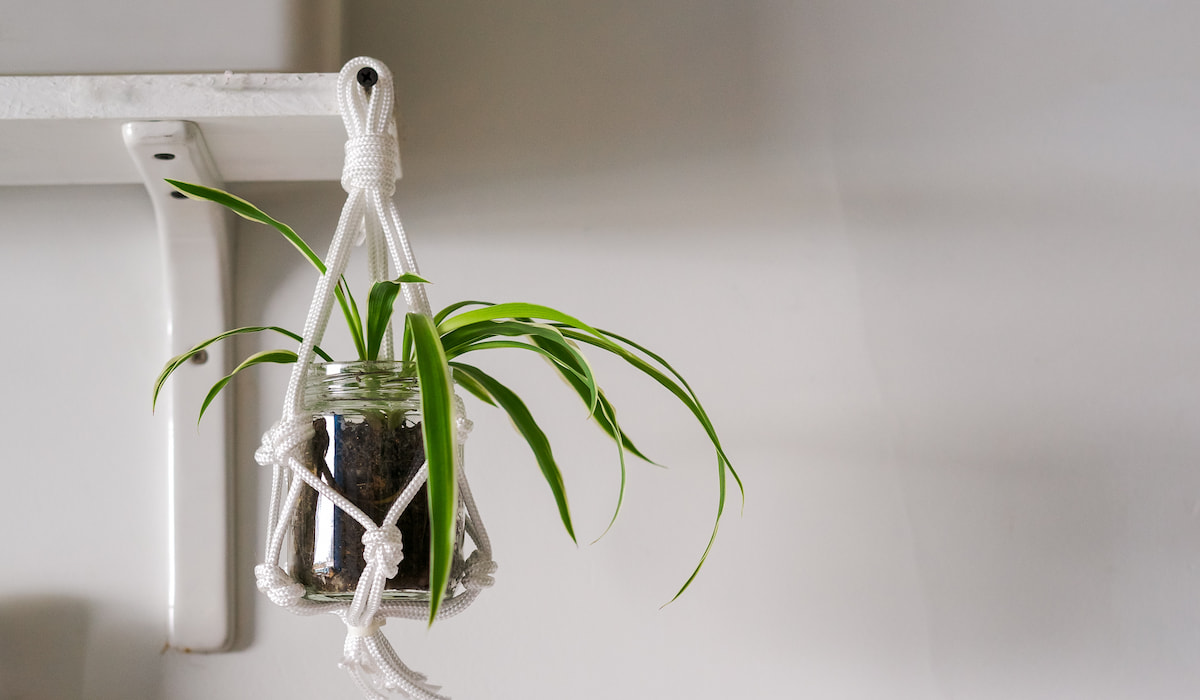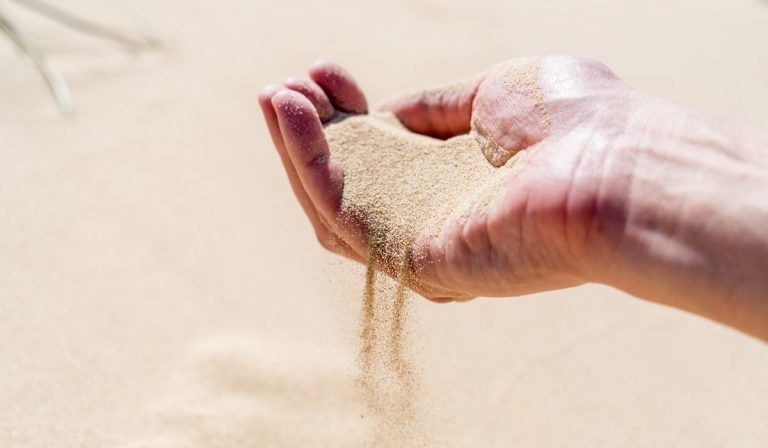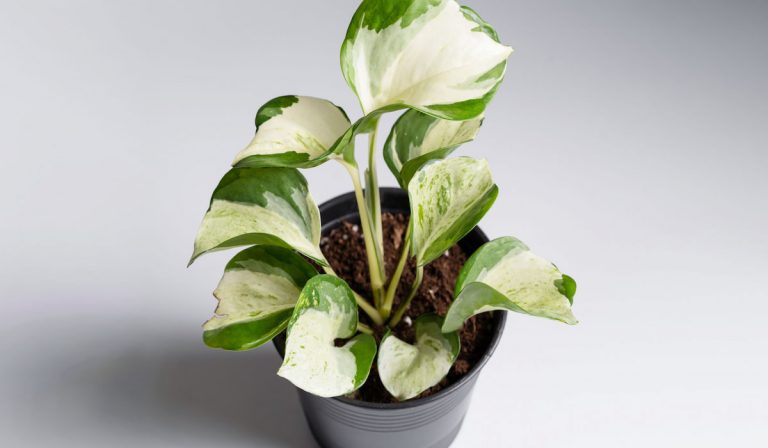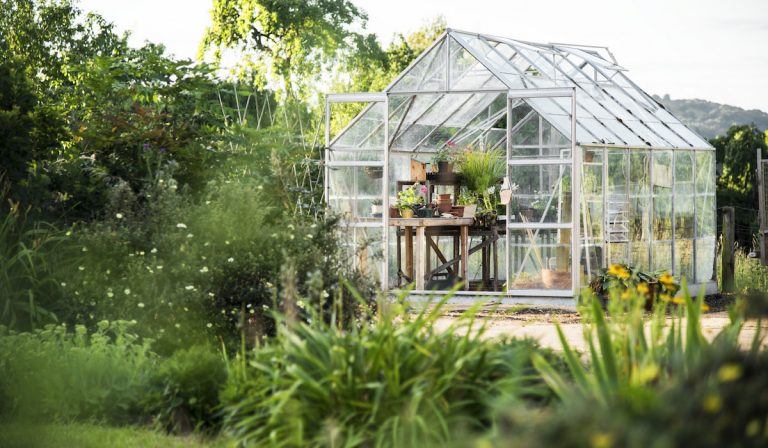Do Spider Plants Like to Be Misted?
Spider plants are quite easy to grow. They make a worthy option for anyone interested in gardening as a hobby.
When caring for spider plants, less can sometimes mean more. Also, you do not have to be an expert gardener to grow them successfully.
Do spider plants like to be misted?
Yes, they do. Spider plants thrive under humid conditions. So during times like winter, when humidity is low, they would benefit from being misted. Frequent misting will keep the spider plant moist and hydrated. Misting also prevents the possibility of spider mite infestation.
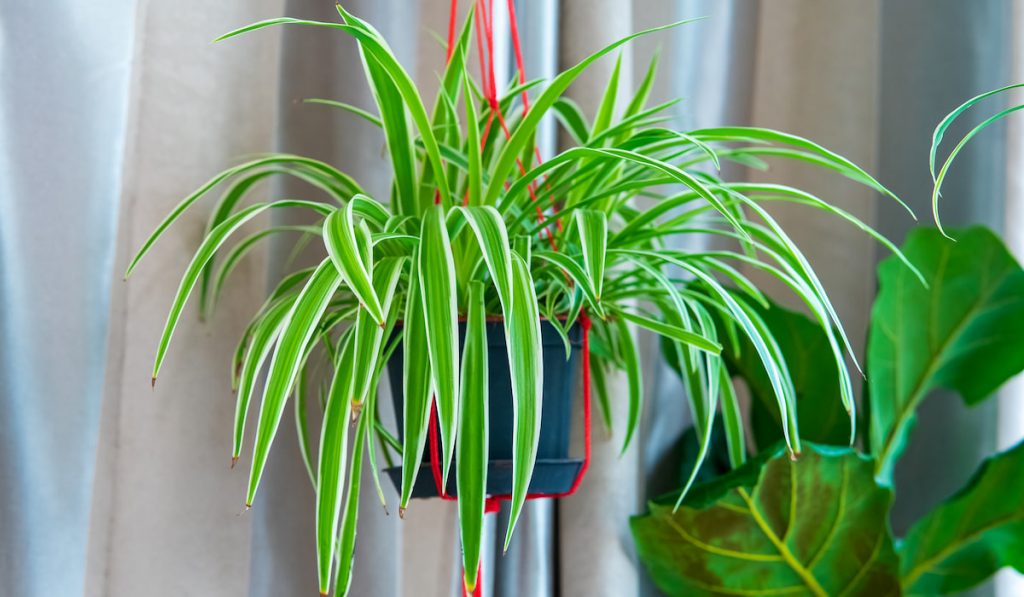
In this article, we provide information on the role of misting in the growth of spider plants. We also discuss when to water spider plants and how often they need watering.
Table of Contents
Do Spider Plants Like to Be Misted?
As we mentioned earlier, spider plants like to be misted to mitigate the effects of low humidity. When the environment around spider plants is arid, their growth may be affected.
When misting spider plants, the best option you have is to work with distilled water.
How Often Should I Mist My Spider Plant?
You need to mist your spider plant frequently. Spider plants grow in environments with low humidity but will do a lot better with increased humidity.
If your spider plant is exposed to regular sunlight, it is necessary to mist first thing in the morning. You should also mist your spider plant 1 or 2 hours before nightfall. This schedule ensures your spider plant does not become damp and rot, get too cold or burn.
If you notice the plant has brown leaf tips, it is an indication that the air is dry. This means your plant requires misting.
How Often Should You Water a Spider Plant Indoors?
In the summer, you need to water your plant regularly and ensure the soil is evenly moist. In the winter, allow the soil to dry out a little between waterings.
Water your plant in moderation once every week for the first year to ensure the soil is always moist. Once the first year passes, watering can be done sporadically. If you have potted spider plants, empty the drainage trays of any excess water regularly.

When watering, aim for the surface of the soil, not the leaves.
If you water the leaves, the water just runs off and will not get into the soil. Spider plants prefer room temperature or warm water because cold water can harm the roots.
Spider plants have long tube-like roots, which enable them to store water. However, this feature can pose a problem when watering them. The roots occupy so much space in the pot preventing water from getting to the center.
For your plant to get adequate water, place it in a basin or sink full of water and let the water soak up from the bottom. Once the watering is done, let it drain before you rehang it.
Why Are the Tips of My Spider Plant Leaves Turning Brown?
Listed below are the reasons your spider plant leaves are turning brown:
Excess Water
Brown spider plant leaves are sometimes a sign that your plant is overwatered, especially if you use tap water.
Tap water contains high levels of salt, which can be toxic for plants. For tropical plants like spider plants, excess salt in the water causes the leaves to turn brown.
Fluorides
Another cause of brown leaves is when the water you use contains fluorides. You can prevent this by using distilled water or rainwater.
Some other reasons the leaves of a spider plant may turn brown include excess fertilization, excess sunlight, underwatering, and insufficient humidity.
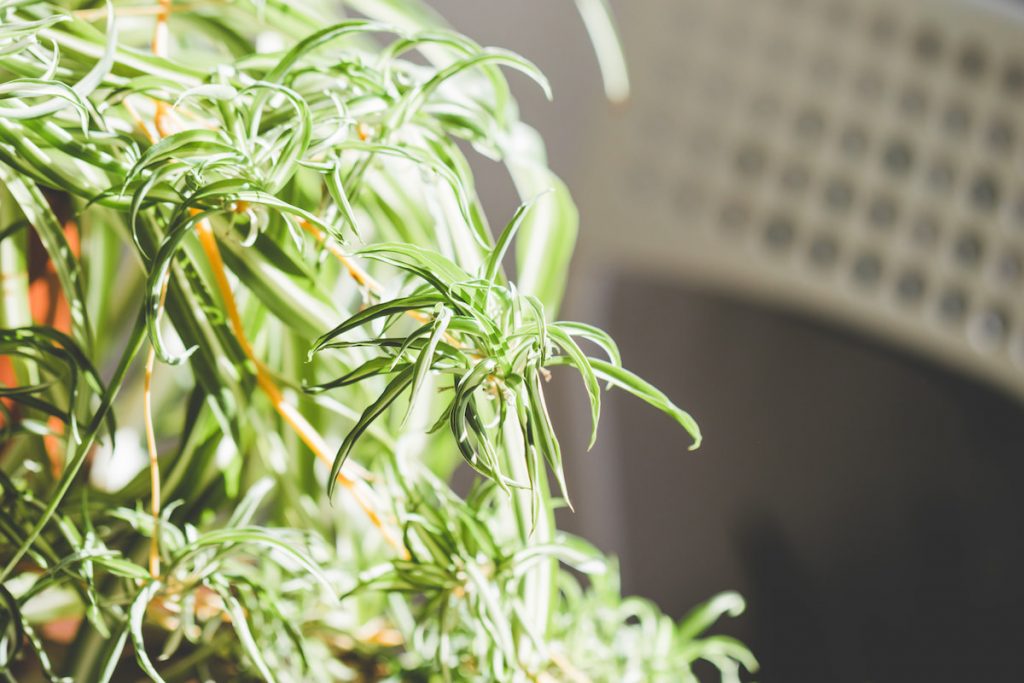
Why Are My Spider Plant Leaves Folding?
Here are some reasons why your spider plant leaves are folding:
Underwatering
Sometimes spider plant leaves folding means the plant is thirsty. Just like humans, spider plants do not like drying out.
At this point, it is vital to point out the relationship between water and plant growth. For the soil to supply nutrients to the plant’s root, water is required. This means underwatering starves your plant of both moisture and beneficial nutrients.
Fortunately, it is easy to correct underwatering. The leaves should return to their usual form after regular watering resumes.
Overwatering
While keeping the soil wet and moist is necessary, you may end up overwatering the plant. Overwatering drowns the plant’s roots, which leads to rotting.
When the roots are rotten, they become unable to supply necessary nutrients to the plant. This causes the leaves to curl and wilt.
To prevent your spider plant leaves from folding, do a soil test to ensure the plant is not overwatered. Remove any visible fungus and mold from the topsoil.
If you perceive any odors from beneath the soil, it indicates root rot. Lift the plant carefully out of the pot to reduce the damage. Using shears, remove rotten, dead, and overly soft roots. Once this is done, replant and water it moderately.
You should also ensure your spider plant pot has good drainage. To avoid excessive moisture, empty the tray below regularly.
Light Exposure
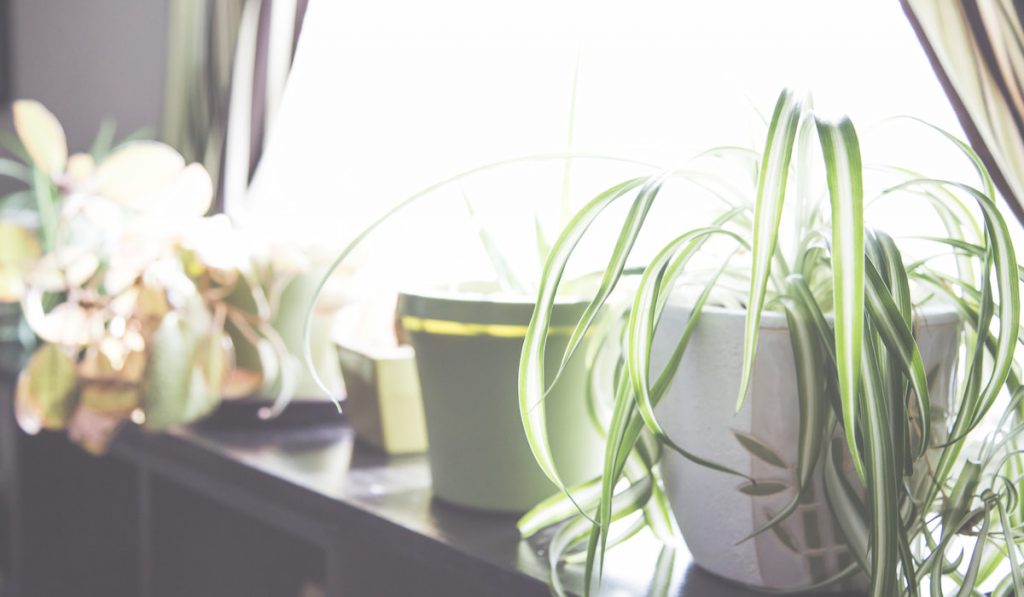
Spider plants are widely regarded by most as indoor plants. They do well even with limited sunlight. This makes them perfect for indoor rooms and windowsills.
Knowing the intensity of light most suitable for your spider plant is essential. In general, they enjoy bright light, shaded spots, or indirect sunlight.
When spider plants are grown in full sunlight, their leaves get sunburnt and curl. On the other hand, inadequate light affects photosynthesis, leading to slow and stunted growth.
Inadequate light may also cause the leaves to dry out and start dropping.
You can avoid issues with improper light exposure by planting in appropriate areas. An east-facing window is a good spot for your plant. West and south facing widow are fine provided the plant is adequately shaded in the summer.
You can also use artificial light as a substitute for the sun. Plants do not have issues using artificial light in place of natural light.
Water Quality
Before watering your spider plant, verify the quality of the water.
The spider plant is a member of the lily family. Lilies are overly sensitive to certain minerals. So, if you water spider plants with water containing these minerals, things might go wrong.

Fluorine is a naturally occurring substance in water. However, when water with excessive fluoride content is used, it can be harmful. It can cause folding and browning of leaves.
When you notice the leaves of your spider plant are folding, stop watering with tap water immediately. Try getting a water filter to keep your plants healthy. You can also buy purified or distilled water for your plants. These types of water do not contain fluoride.
If your spider plant is outside, check to see if there is any tap water runoff nearby. Channel the runoff to another location if you notice any.
The temperature of the water also matters. Extremely hot or cold water can affect the plant.
Pot Size
Another reason your spider plant leaves are folding is due to their pot size. You might even notice the overgrown plant roots popping out of the drainage holes.
When a plant root becomes restricted by a small pot, it becomes a problem. Firstly, the roots can become severely damaged.
Restricted space in the pot also affects the transfer of water and necessary nutrients to the plant. On the contrary, a large pot might cause root rot. This happens because spider plants cannot absorb all the water retained by the soil.
If the pot is no longer sizable enough for the roots, transfer the spider plant to a larger pot. Replant in a pot with a diameter two inches wider than the first pot.
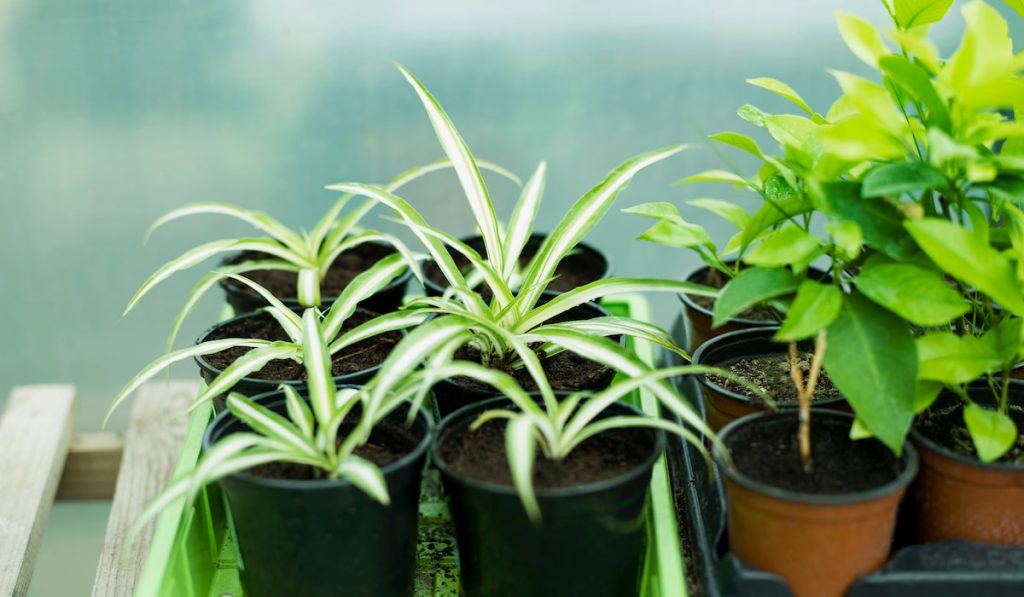
You can also divide the root ball with the leaves still attached to them. After doing this, replant the divided sections in new pots.
Fertilizer Application
Folding of leaves can also be the result of poorly fertilized soil. For your plants to grow well, they require proper fertilization.
Use high-grade fertilizers and follow the instructions on the label. Spider plants should be fed in moderation. However, during growing seasons, you may apply fertilizer at least once every month.
Fertilizers with high nitrogen content are most suitable. They improve the plant’s yield, shoots, leaves, and height.
You should avoid fertilizers with high boron and fluorine content. You should also ensure you do not over-fertilize the plant.
How Do You Know When a Spider Plant Needs Water?
To find out if your spider plant requires watering, you should first perform a soil test.
Poke your finger gently into the soil to find out how dry it is. If you notice the top 1 inch of the soil has no moisture, your plant needs to be watered. If the soil is still moist, wait a few days, then test your soil again.
Before you decide to water your plant again, ensure the soil is dried out. If the soil used retains a lot of water, frequent watering is not required.
Conclusion
Spider plants require regular misting if they are to thrive in places with low humidity. So, in arid conditions, they like to be misted. In misting spider plants, you will get the best outcomes with distilled water. Using tap water, which contains dissolved salts, may affect the leaves adversely and cause browning.

